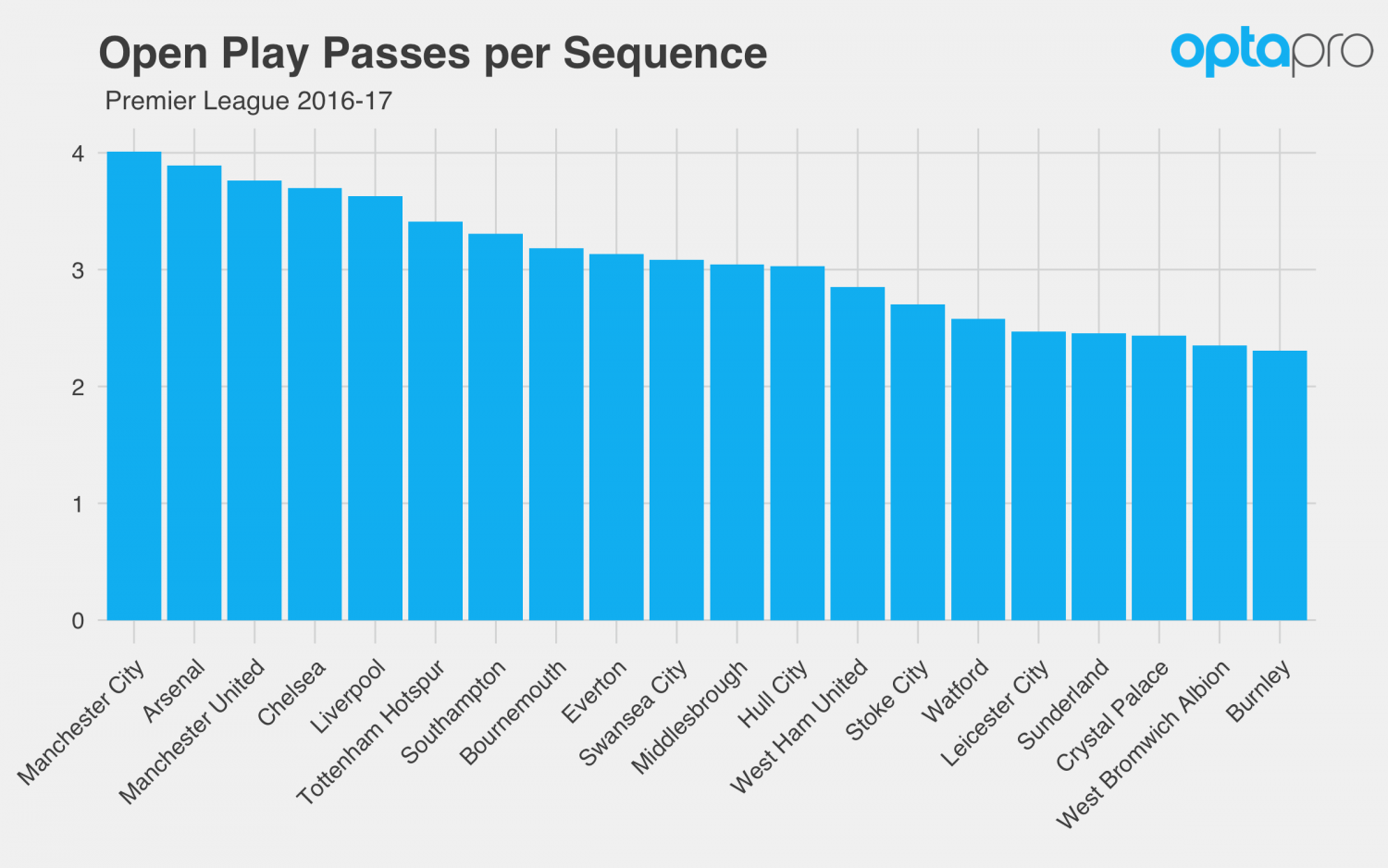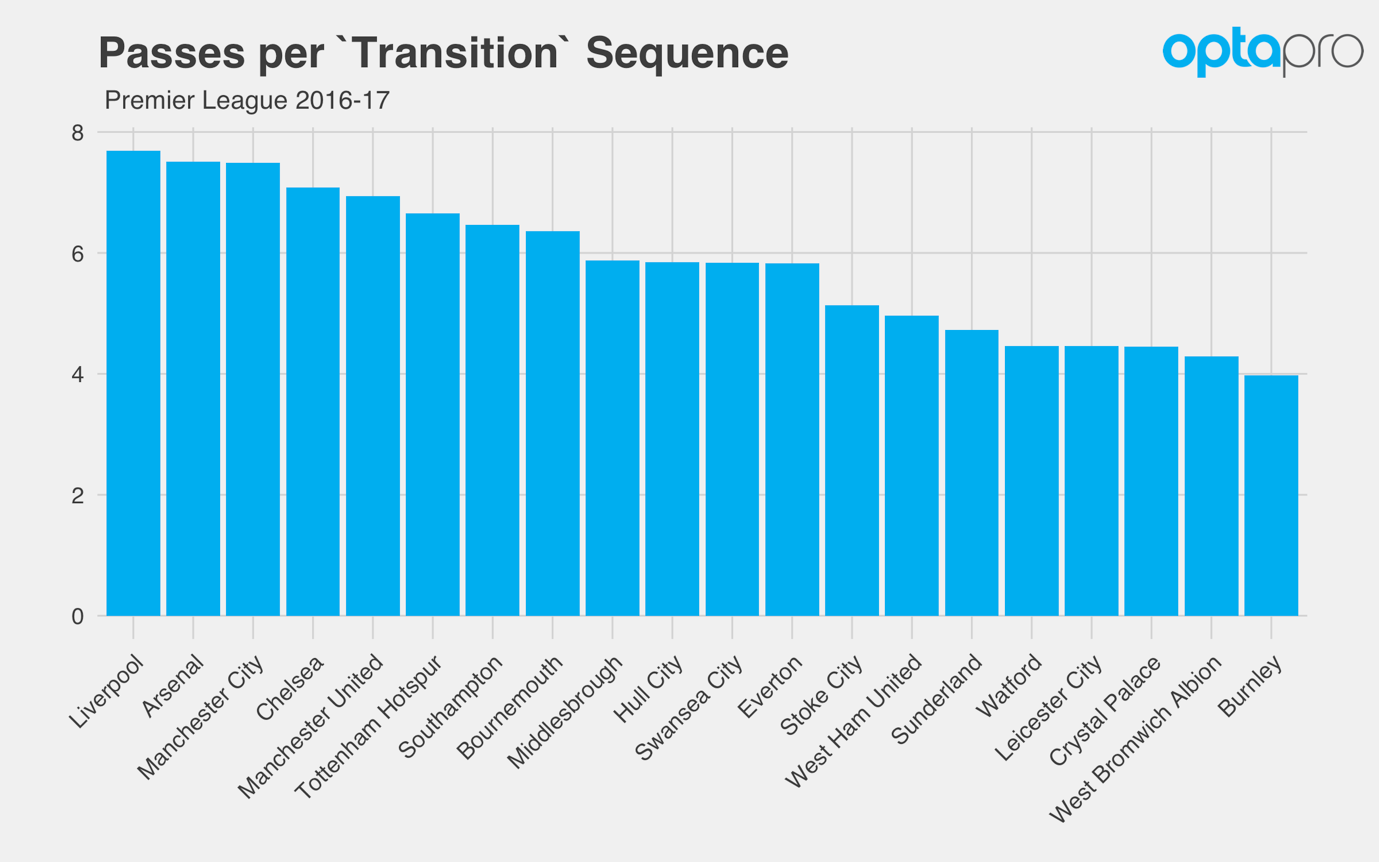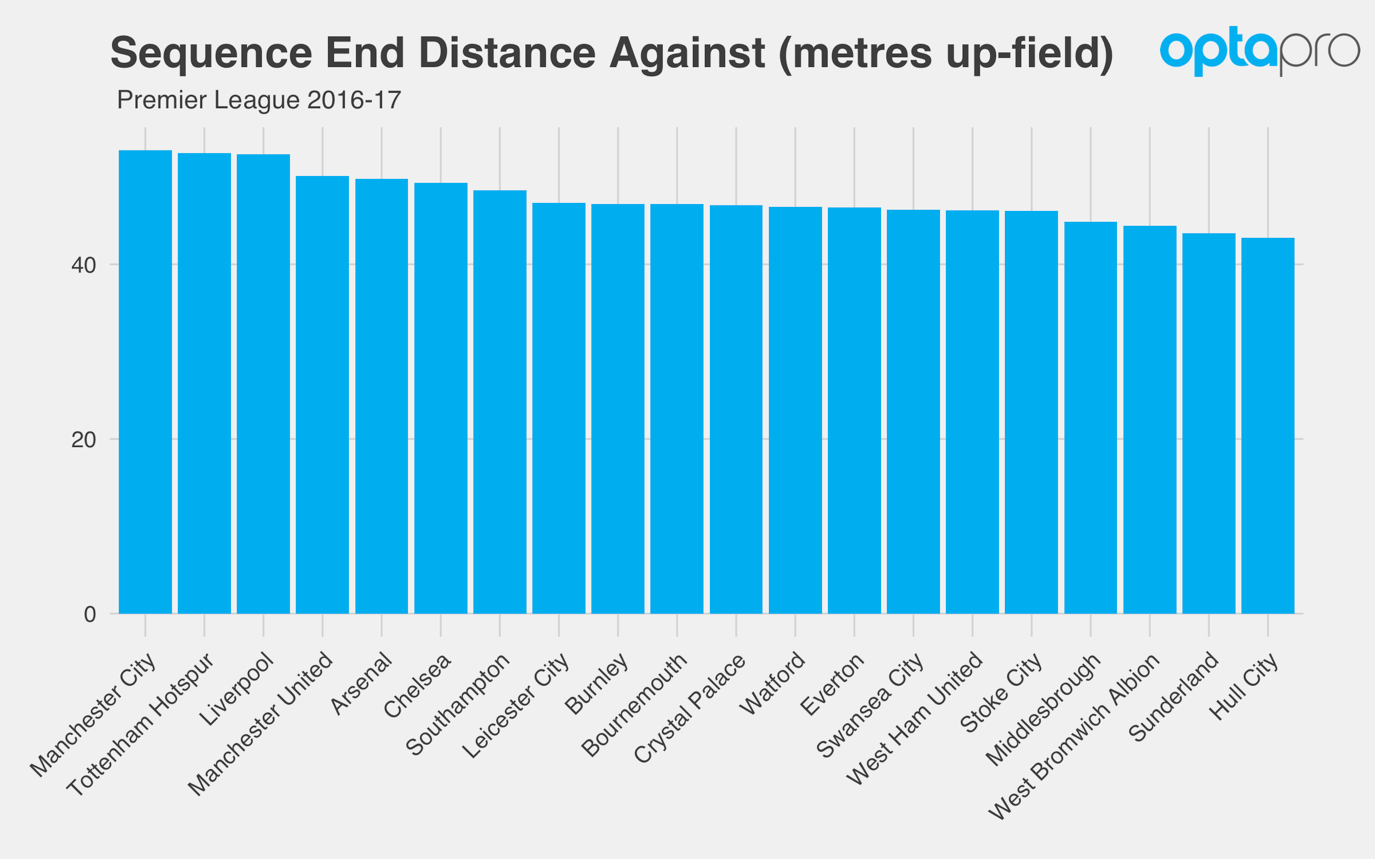Earlier this week, Johannes Harkins introduced the Opta possessions framework. This sequence-based model focuses on going beyond analysing events in isolation, and adopts a more holistic approach in how we analyse performance and style, looking at passages of play, which are defined as sequences and possessions (you can read a more in-depth explanation by clicking on the link above).
In this short article, I’ve focused on the Premier League and applied sequence data to answer a few tactically relevant questions, focusing on passing, pressing and involvement.
Passing
Which team passes the most in open play sequences?
The mean number of passes per sequence (open play only). Manchester City’s four passes per sequence sees them top this ranking, with David Silva being their ‘most involved’, featuring in over 57 sequences per 90.

Do teams have wholly different styles when it comes to transition?
Similar to the above, but this application only acknowledges sequences that start in a team’s defensive third and finish in the final third.

There is an obvious contrast in how teams build-up. Burnley’s direct approach can be seen through their average of 3.9 passes per ‘transition’ sequence, whereas Liverpool’s more patient build-up approach can be seen through their league-leading average of 7.7 passes.
Pressing
How high up the pitch are teams ending opposition sequences?
This metric identifies where on the pitch the opposition ends their sequences against each team. It can be used as a useful proxy to better understand how a team presses.

Unsurprisingly, we see Manchester City and Tottenham at the top end – both praised for their pressing this season. At the other end are Sunderland and Hull, both of whom sat deep and let opponents control the ball well within their own half.
Burnley sit 9th in this ranking, which perhaps reinforces just how effective Sean Dyche’s forward players were out of possession.
Involvement
Which players are involved in the most sequences?
Central midfield players from across the top six dominate this table, along with a few cameo inclusions from full-backs in the higher pressing sides. Only two players outside of the top six feature; Southampton’s Pierre-Emile Højbjerg and Stoke City’s Charlie Adam – again, both central midfielders.
| Player | Sequences involved | Minutes played | Sequences per 90 |
| C. Fabregas | 1054 | 1327 | 71.51 |
| J. Henderson | 1545 | 2118 | 65.66 |
| J. Milner | 2236 | 3159 | 63.7 |
| G. Xhaka | 1655 | 2486 | 59.92 |
| P. Pogba | 1736 | 2608 | 59.9 |
| P. Coutinho | 1454 | 2243 | 58.35 |
| D. Silva | 1773 | 2766 | 57.7 |
| K. De Bruyne | 1842 | 2883 | 57.51 |
| D. Rose | 973 | 1533 | 57.13 |
| M. Ozil | 1798 | 2847 | 56.84 |
| A. Herrera | 1549 | 2464 | 56.57 |
| C. Eriksen | 1981 | 3164 | 56.34 |
| Y. Toure | 1217 | 1947 | 56.26 |
| B. Davies | 1060 | 1735 | 54.98 |
| Fernandinho | 1668 | 2754 | 54.51 |
| A. Ramsey | 744 | 1229 | 54.47 |
| P. Højbjerg | 786 | 1299 | 54.47 |
| K. Walker | 1617 | 2704 | 53.83 |
| C. Adam | 893 | 1495 | 53.76 |
| E. Can | 1410 | 2368 | 53.59 |
Players in high-possession teams will obviously feature more prominently in this ranking, so adjusting for a team’s overall sequences would be considered ahead of further analysis.